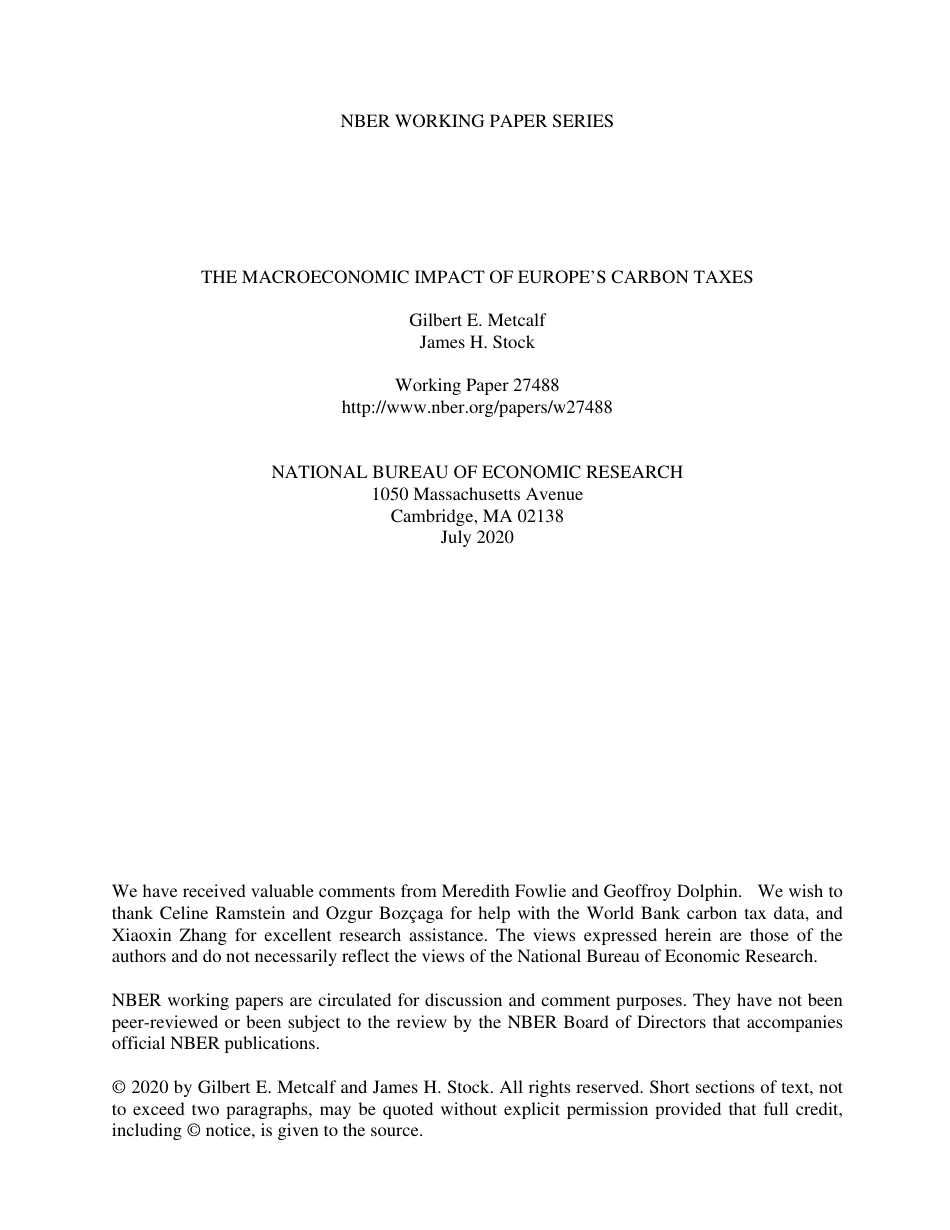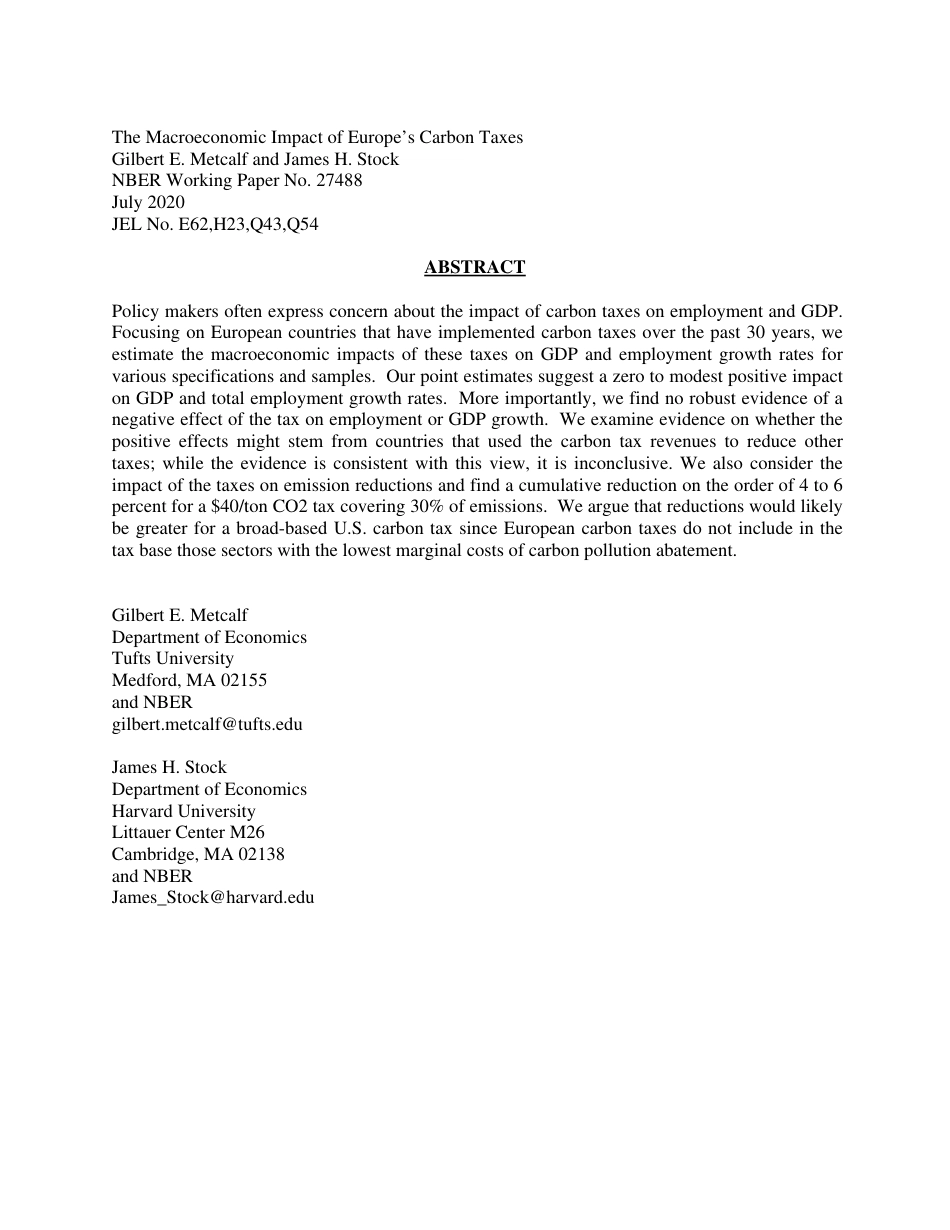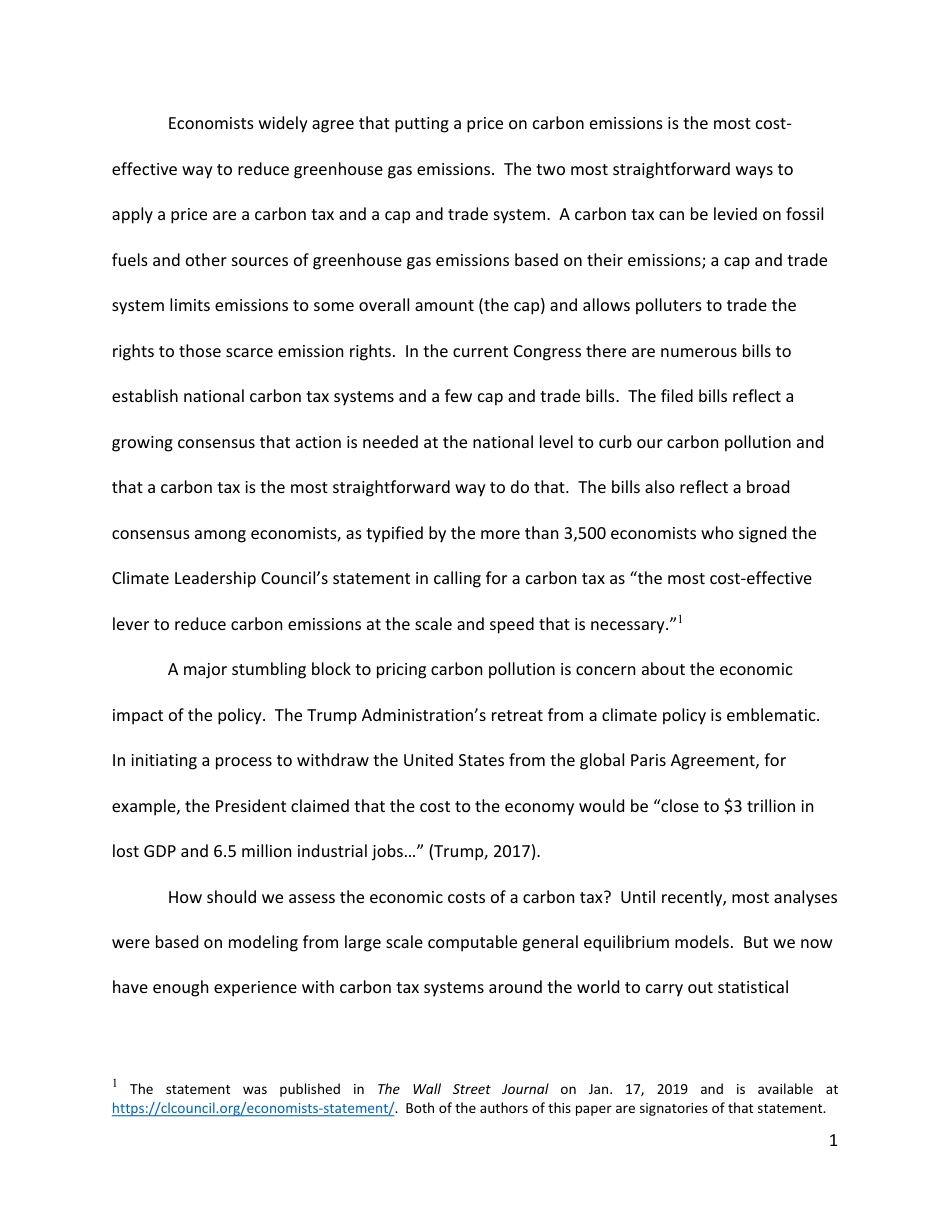NBER WORKING PAPER SERIESTHE MACROECONOMIC IMPACT OF EUROPE’S CARBON TAXESGilbert E. MetcalfJames H. StockWorking Paper 27488http://www.nber.org/papers/w27488NATIONAL BUREAU OF ECONOMIC RESEARCH1050 Massachusetts AvenueCambridge, MA 02138July 2020We have received valuable comments from Meredith Fowlie and Geoffroy Dolphin. We wish to thank Celine Ramstein and Ozgur Bozçaga for help with the World Bank carbon tax data, and Xiaoxin Zhang for excellent research assistance. The views expressed herein are those of the authors and do not necessarily reflect the views of the National Bureau of Economic Research.NBER working papers are circulated for discussion and comment purposes. They have not been peer-reviewed or been subject to the review by the NBER Board of Directors that accompanies official NBER publications.© 2020 by Gilbert E. Metcalf and James H. Stock. All rights reserved. Short sections of text, not to exceed two paragraphs, may be quoted without explicit permission provided that full credit, including © notice, is given to the source.The Macroeconomic Impact of Europe’s Carbon TaxesGilbert E. Metcalf and James H. StockNBER Working Paper No. 27488July 2020JEL No. E62,H23,Q43,Q54ABSTRACTPolicy makers often express concern about the impact of carbon taxes on employment and GDP. Focusing on European countries that have implemented carbon taxes over the past 30 years, we estimate the macroeconomic impacts of these taxes on GDP and employment growth rates for various specifications and samples. Our point estimates suggest a zero to modest positive impact on GDP and total employment growth rates. More importantly, we find no robust evidence of a negative effect of the tax on employment or GDP growth. We ex...



